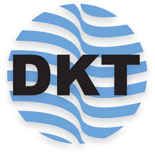Why PV Modules should preferably not be oriented to the South and why we need new measurements of spectral radiance
- institute for meteorology, Leibniz university of Hannover, Hannover, Germany (seckmeyer@muk.uni-hannover.de)
PV modules tilted and oriented toward east and west directions gain gradually more importance as an alternative to the presently-preferred south (north in the Southern Hemisphere) orientation and it is shown to become economically superior even under the reimbursement of feed-in tariff (FIT). This is a consequence of the increasing spread between the decreasing costs of self-consumed solar power and the costs for power from the grid. One-minute values of irradiance were measured by silicon sensors at different orientations and tilt angles in Hannover (Germany) over three years. We show that south-oriented collectors give the highest electrical power during the day, whereas combinations of east and west orientations (E-W) result in the highest self-consumption rate (SC), and combinations of southeast and southwest (SE-SW) orientations result in the highest degree of autarky (AD), although they reduce the yearly PV Power by 5–6%. Moreover, the economic analysis of PV systems without FIT shows that the SE-SW and E-W combinations have the lowest electricity cost and they are more beneficial in terms of internal rate of return(IRR),compared to the S orientation at the same tilt. For PV systems with FIT, the S orientation presently provides the highest transfer of money from the supplier. However, as a consequence of the continuing decline of FIT, the economic advantage of S orientation is decreasing. E-W and SE-SW orientations are more beneficial for the owner as soon as FIT decreases to 7 Ct/kWh. East and west orientations of PV modules do not only have benefits for the individual owner but avoid high costs for storing energy—regardless who would own the storage facilities—and by avoiding high noon peaks of solar energy production during sunny periods,which would become an increasing problem for the grid if more solarpower is installed. Furthermore, two types of commonly used PV software (PVSOL and PVsyst) were used to simulate the system performance. The comparison with measurements showed that both PV software underestimate SC and AD for all studied orientations, leading to the conclusion that improvements are necessary in modelling. Such improvements, however, also require a better knowledge of the angular dependence of the spectral radiance under all sky conditions. Since the spectral radiance is complex and usually changes within seconds, we developed a new instrument capable of measuring the spectra of sky radiance in more than 100 directions within one second. First measurements with this novel instrument are shown.
How to cite: Seckmeyer, G.: Why PV Modules should preferably not be oriented to the South and why we need new measurements of spectral radiance , 12. Deutsche Klimatagung, online, 15–18 Mar 2021, DKT-12-48, https://doi.org/10.5194/dkt-12-48, 2021.

